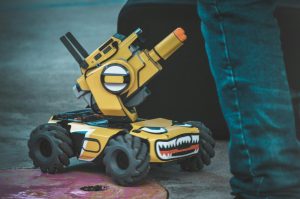Last-Mile Delivery Wars: Uber vs. DoorDash for Speed Dominance
Last-mile delivery has become a battleground for some of the biggest names in the tech industry, with companies like Uber and DoorDash competing for dominance. As more and more consumers turn to online shopping and food delivery services, the need for efficient and speedy last-mile delivery has never been greater. In this article, we will explore the ongoing “delivery war” between Uber and DoorDash and how each company is striving to be the leader in providing fast and reliable delivery services.
Understanding Last-Mile Delivery
In the world of logistics, last-mile delivery refers to the final leg of the delivery process, where goods are transported from a distribution center or hub to the customer’s doorstep. This stage is often the most critical, as it can significantly impact the customer’s overall satisfaction with the delivery service. According to a survey conducted by Convey, a delivery experience platform, 97% of customers said that the last-mile delivery experience influenced their decisions to shop with a retailer again.
With the rise of e-commerce and online food ordering, companies have been vying to provide the best last-mile delivery service to their customers. This has led to fierce competition between ride-hailing giant Uber and food delivery service DoorDash.
The Rivalry: Uber vs. DoorDash
Uber’s Expansion into Delivery
Since its inception, Uber has been known for revolutionizing the transportation industry with its ride-hailing service. However, the company’s ambitions go beyond just transporting people. In 2014, Uber launched Uber Eats, its food delivery platform, and entered the delivery market.
Uber’s expansion into delivery was a strategic move, as the company saw the potential and growing demand for fast and affordable delivery services. Its extensive network of drivers and advanced technology have allowed Uber to quickly establish itself as a serious player in the last-mile delivery space.
DoorDash’s Rise to Success
While Uber was busy expanding, DoorDash was making moves of its own. Founded in 2013, DoorDash has quickly become one of the largest food delivery services in the United States. The company’s focus on providing a seamless and reliable delivery experience has earned it a loyal customer base, as well as partnerships with major restaurant chains such as McDonald’s and Chipotle.
DoorDash has also been investing in its own delivery infrastructure, with the introduction of its own fleet of drivers and the acquisition of delivery platform Caviar in 2019. This has allowed the company to have more control over the entire delivery process, ensuring faster and more efficient service for its customers.
Speed is the Name of the Game
One of the biggest challenges in last-mile delivery is achieving speed and efficiency. Customers expect their deliveries to arrive quickly, and companies that can’t keep up risk losing business to their competitors. This is where Uber and DoorDash’s rivalry intensifies. Both companies have been making significant efforts to improve their delivery times and speed up the overall process.
Uber has been experimenting with new delivery methods, including leveraging its existing ride-hailing network to make food deliveries. Through its “Uber Connect” service, customers can send packages to one another without leaving their homes. The company has also invested in drone delivery through its subsidiary, Uber Elevate, and has been piloting the service in San Diego.
On the other hand, DoorDash has been using its data and technology to optimize its delivery routes and reduce the time it takes to get food from restaurant to customer. The company has also introduced “DashPass,” its subscription service, which offers unlimited free delivery for members, incentivizing them to choose DoorDash more frequently.
The Future of Last-Mile Delivery
The battle for speed dominance in last-mile delivery shows no signs of slowing down. As the demand for online goods and food continue to grow, companies must find innovative ways to meet the needs of their customers successfully. While Uber and DoorDash continue to compete, other players, such as Amazon and Instacart, are also making moves in the delivery space, giving them a run for their money.
As competition intensifies, companies must also consider the impact of their delivery services on the environment. More deliveries mean more carbon emissions, which can have detrimental effects on the planet. Both Uber and DoorDash have made commitments to reduce their carbon footprint by using alternative fuel vehicles and electric bikes for deliveries.
Conclusion
In the last-mile delivery wars, speed is king. Uber and DoorDash are head-to-head in the race to provide the fastest and most efficient delivery services. As they continue to innovate and invest in delivery infrastructure, consumers can expect to receive their goods and food even faster in the future. However, with customer satisfaction also being a crucial factor in the success of last-mile delivery, companies must also prioritize the overall delivery experience to emerge as the ultimate winner in this ongoing competition.











